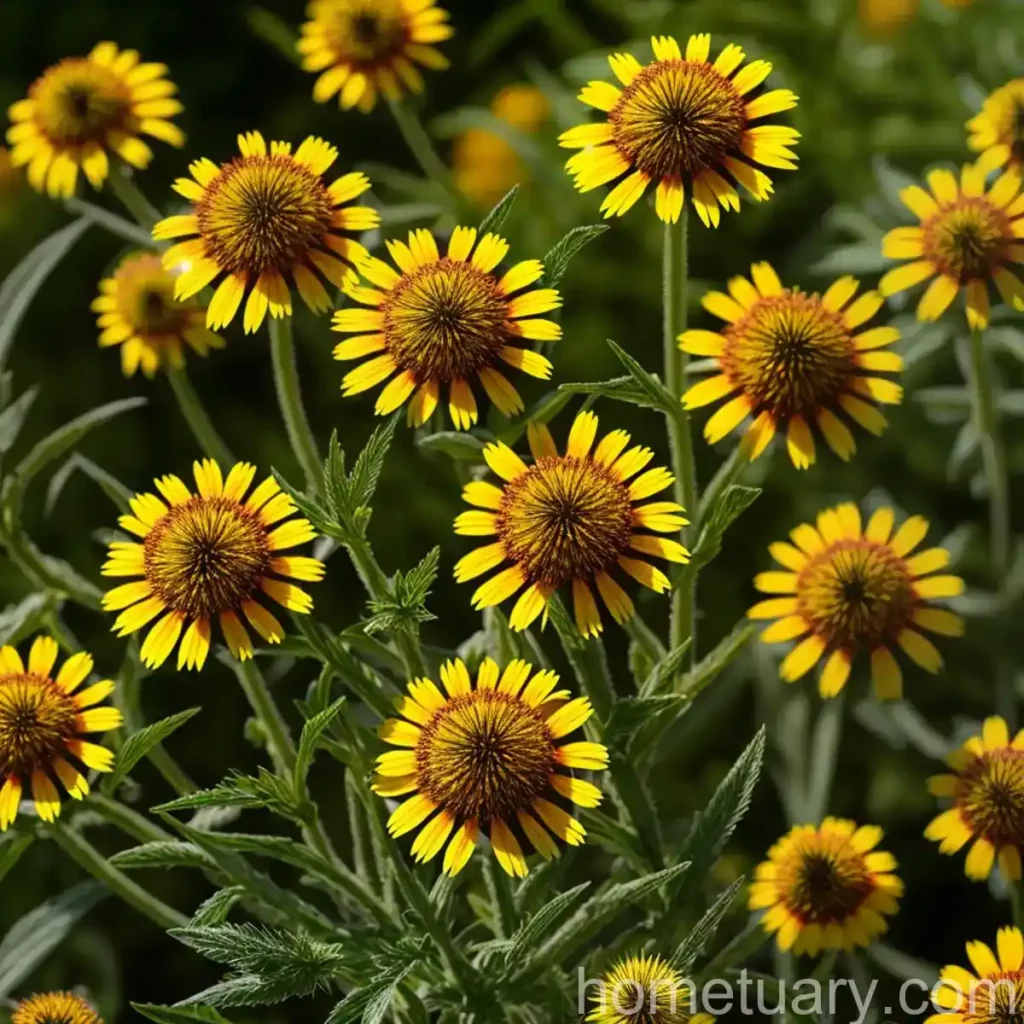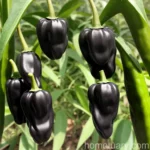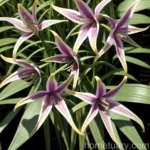Elecampane (Inula helenium)
Elecampane (Inula helenium), also known as horse-heal, is a tall, perennial herb belonging to the sunflower family, Asteraceae. This plant is native to Europe and Asia and has been naturalized in North America. Elecampane has a long history of both medicinal and cultural uses, and it is also valued as an ornamental plant in gardens. In this comprehensive guide, we will delve into the cultivation, uses, and care of elecampane, as well as its cultural and historical significance.
What is Elecampane?
Elecampane is a striking herbaceous perennial that can reach heights of up to six feet. It is characterized by large, broad, coarse leaves and vibrant yellow, daisy-like flowers that bloom in mid to late summer. The plant is highly aromatic, with a sweet, warm, and slightly bitter scent.
Key Takeaways – Elecampane (Inula helenium)
- Scientific Name: Inula helenium
- Common Names: Elecampane, horse-heal
- Family: Asteraceae
- Native Habitat: Europe and Asia
- Cultural Significance: Historically used in herbal medicine and folklore
- Growth Habit: Tall, herbaceous perennial with large leaves and yellow daisy-like flowers
- Aromatic Qualities: Sweet, warm, slightly bitter scent
- Uses: Medicinal, culinary, and ornamental
With its robust growth and aromatic qualities, elecampane has captivated the interest of botanists, herbalists, and gardeners for centuries. Now, let’s explore the cultivation and care of this fascinating plant, including its cultural uses, requirements for water, sunlight, soil, and fertilization, as well as tips for pruning, propagation, and addressing common diseases and pests.
Cultivation of Elecampane
Cultivating elecampane can be a rewarding experience, given its resilience and the array of benefits it offers. From historical and traditional uses to its role in contemporary herbal medicine, elecampane is a versatile and valuable plant. Understanding its requirements and optimal growing conditions is crucial for successfully nurturing it.
Uses
Elecampane has a rich history of applications, ranging from medicinal and culinary to cultural and ornamental uses. Let’s dive into the diverse uses of this remarkable plant.
Medicinal Uses
Elecampane possesses a long-standing reputation as a medicinal herb with various health benefits. Some of the key medicinal uses of elecampane include:
- Respiratory Health Benefits: The roots of elecampane are utilized to support respiratory health, making it a valuable natural remedy for respiratory conditions such as coughs, bronchitis, and respiratory congestion.
- Digestive Health: In herbal medicine, elecampane is also employed to promote digestive health and address digestive disorders.
- Historical Uses: Elecampane has a rich history in traditional and alternative medicine, being used for bronchial infections, asthma relief, sinusitis, and as an immune support tonic.
Culinary Uses
While less common, elecampane has also been incorporated into culinary creations, particularly in herbal teas and natural remedies.
Cultural and Ornamental Uses
Beyond its medicinal and culinary applications, elecampane holds historical and cultural significance. It has been woven into folklore, herbal preparations, and even magical beliefs, adding to its allure.
Water
Providing the appropriate amount of water to elecampane is essential for its growth and overall health. As a hardy and robust perennial plant, elecampane demonstrates adequate drought tolerance once established. However, consistent moisture is beneficial, especially during the initial stages of growth and flowering. Ensuring well-drained soil can aid in managing water levels effectively.
Sunlight
Elecampane thrives in full sun to partial shade. Offering it at least six hours of direct sunlight each day generally promotes robust growth and encourages optimal flowering. In regions characterized by intense heat, providing some afternoon shade can help protect the plant from excessive heat stress.
Soil
The soil requirements for elecampane are relatively straightforward. It prefers rich, loamy soil with good drainage. Incorporating organic matter into the soil can enhance its nutrient content and structure, contributing to the well-being of the plant. While elecampane can tolerate a range of soil pH levels, slightly acidic to neutral soils are generally considered favorable.
Fertilizer
Applying a balanced, organic fertilizer in early spring can provide a nutrient boost to elecampane as it prepares for the growing season. Avoiding excessive nitrogen is advisable, as this can promote lush foliage at the expense of flower production. Using a fertilizer with a balanced NPK ratio, supplemented with micronutrients, can support healthy growth and vibrant blooms.
Pruning
Pruning elecampane can help maintain its vigor and aesthetics. Deadheading spent blooms and removing damaged or withered foliage can contribute to the plant’s overall health. It is also essential to prune back the stems in late fall or early spring to facilitate fresh growth and prevent overcrowding.
Propagation
Propagating elecampane can be accomplished through division or seeds, with division being the preferred method for maintaining the characteristics of the parent plant. Dividing the rhizomes in early spring or autumn allows for the creation of new plants while rejuvenating the existing ones. Starting elecampane from seeds is also viable and can offer a more extensive propagation approach.
Container Popularity
The adaptability of elecampane makes it suitable for container gardening, allowing individuals with limited space to cultivate and enjoy this distinctive plant. Its attractive foliage and blooms can serve as an eye-catching addition to patios, decks, and balconies. Growing elecampane in containers requires attention to watering and soil quality, ensuring that the plant’s needs are met within the confined space.
Common Diseases and Pests
While generally vigorous, elecampane is susceptible to certain diseases and pests that can dampen its vitality if left unchecked. Understanding these potential issues and implementing proactive measures is crucial for preserving the health and beauty of the plant.
Disease Diagnosis
Some of the common diseases that may affect elecampane include:
- Leaf Spot: Manifesting as dark, sunken spots on the foliage, leaf spot can be caused by fungal pathogens and may lead to defoliation if severe.
- Root Rot: Excessive moisture or poorly drained soil can predispose elecampane to root rot, resulting in wilting, yellowing, and eventual decay of the roots.
- Powdery Mildew: Characterized by the presence of powdery, white fungal growth on the leaves, powdery mildew can affect elecampane, especially in humid conditions.
Common Pests
Several pests may pose a threat to elecampane, including:
- Aphids: These small, sap-sucking insects can cluster on the tender shoots and underside of leaves, causing distortion and stunted growth.
- Slugs and Snails: These mollusks can feed on the leaves and flowers of elecampane, leaving behind irregular holes and damage.
- Spider Mites: Spider mites are microscopic pests that can infest elecampane, causing stippling and discoloration on the foliage.
Botanist’s Tips
Drawing from the knowledge and insights of experienced botanists can offer valuable guidance for nurturing elecampane and addressing specific challenges. The following tips can aid in optimizing the growth and well-being of elecampane:
- Adequate Spacing: Providing ample room between elecampane plants can promote air circulation and reduce the risk of diseases such as powdery mildew.
- Vigilant Monitoring: Regular inspection of the plant for signs of pests, diseases, or nutrient deficiencies allows for prompt intervention and resolution.
- Appropriate Mulching: Applying a layer of organic mulch around the base of elecampane can help conserve moisture, suppress weeds, and maintain optimal soil temperature.
Fun Facts about Elecampane
Delving into the unique and captivating aspects of elecampane can paint a colorful and intriguing picture of this remarkable plant. Let’s uncover some fun and intriguing facts about elecampane:
- The botanical name “Inula helenium” is derived from Helen of Troy, with elecampane being associated with the mythological story of her tears falling to the ground and giving rise to the plant.
- In traditional herbal medicine, elecampane has been acclaimed for its ability to support lung health and is often employed as a respiratory tonic.
- Elecampane has a rich history in European folklore, with various legends and beliefs attributing magical and protective properties to the plant.
Links to External Resources
For further exploration of elecampane, its uses, and cultivation, the following resources can provide valuable insights and information:
- Royal Horticultural Society – Inula helenium
- University of Maryland Medical Center – Elecampane
- Missouri Botanical Garden – Inula helenium
- The Herb Society – Elecampane Root
- Plants for a Future – Inula helenium
As our journey into the world of elecampane and its multifaceted nature draws to a close, we have gained a deeper understanding of this captivating plant. From its historical significance and traditional uses to its growth requirements and potential challenges, elecampane offers a wealth of knowledge, benefits, and beauty to those who appreciate and cultivate it. Whether grown for its medicinal properties, cultural symbolism, or ornamental allure, elecampane continues to captivate and inspire, enriching the tapestry of botanical diversity.
In conclusion, the versatile nature of elecampane, coupled with its rich heritage and botanical intrigue, solidifies its place as a valuable and cherished perennial plant. By embracing the traditions, embracing the cultivation, and honoring the lore surrounding elecampane, we invite the essence of this extraordinary plant into our lives, perpetuating its legacy and celebrating its enduring contributions.















